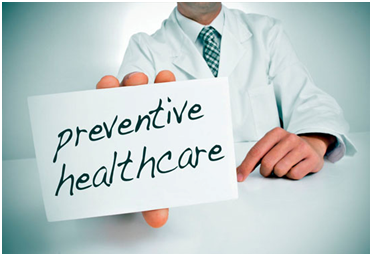Technology for preventing illness is changing the way we view our health. In lieu of waiting around for health problems to manifest, this revolutionary method focuses on identifying possible issues earlier, empowering people to act before their conditions become worse. By integrating modern methods and tools to prevent illness, preventive health technology allows us to live longer and healthier lives. This blog focuses on how technological advances like wearable trackers, AI diagnostics, telemedicine, predictive analytics and other technologies are revolutionising health care and improving the quality of life.
Wearable Health Trackers
Imagine a watch or a bracelet which continuously keeps track of your vitals and gives immediate feedback on your health. That’s exactly what wearable fitness trackers, such as Fitbit, Apple Watch, and WHOOP, are able to do. They track various parameters like heart rate as well as sleeping patterns and levels of activity as well as your blood-oxygen levels. Through providing information accessible to you, they enable you to better understand the body’s needs and its changes.
Wearables don’t only aid in fitness; they’re also life-saving tools. In particular, there are many devices that can detect irregular heartbeats that could be indicative of atrial fibrillation. They also issue alerts to users, urging them to seek medical care. This kind of technology has saved the lives of many people by identifying problems early, highlighting the necessity of preventing rather than treating.
AI-Powered Diagnostic Tools
Artificial intelligence is leaps and bounds ahead with regard to healthcare diagnosis. AI-powered devices can analyse medical images, including X-rays or MRIs, to detect abnormalities that are not visible to the eyes of a human. This level of precision enhances the early detection of diseases such as heart disease and neurological conditions.
AI doesn’t end there. Machine learning algorithms process huge quantities of patient information in order to detect patterns and health hazards. For instance, AI systems are being employed to detect conditions like hypertension or diabetes in relation to lifestyle as well as genetic predispositions. Through AI-driven diagnosis, healthcare is more proactive and less reactive, providing patients with a vital chance to manage their health.
Telemedicine and Remote Monitoring
Telemedicine has transformed access to healthcare, especially for those in rural or underserved regions. With the use of virtual consults, patients are able to communicate with doctors without having to attend meetings in person. This is especially beneficial for those who have mobility problems or chronic conditions that require regular surveillance.
Remote monitoring devices complement the telemedicine service by allowing doctors to monitor a patient’s health-related metrics from afar. For example, the cardiac monitors are able to send ECG results directly to a healthcare professional, which allows for real-time evaluations and early intervention when abnormalities are detected. Through removing geographic barriers, telemedicine as well as remote monitoring together help to improve health equity as well as better prevention of illness.
Personalized Health Apps
Some health products are not suitable for all individuals. Individualised health apps are designed to meet specific needs and provide personalised tracking and suggestions for nutrition, exercise and mental health, as well as more. Apps such as MyFitnessPal, Headspace, and Flo allow users to live healthier habits that fit their needs and goals.
The apps are often integrated into wearable devices and create a seamless health management system. They can remind you to take medications, provide strategies for reducing stress or aid you in maintaining an appropriate diet. Through promoting small but effective practices, health apps that are personalised offer convenience as well as longer-term advantages.
Predictive Analytics
Predictive analytics is among the most exciting advances in the field of preventive health technology. Through the analysis of historical data with the latest metrics, predictive models are able to identify patterns and risk factors before symptoms appear. For instance, healthcaresystems make use of predictive analytics to anticipate flu-related outbreaks, speeding up preparation and prevention. In addition, patients are provided with individualised risk assessments based upon family life, history and environmental variables which allow them to reduce the risk of developing.
Utilising predictive analytics in healthcare can transform data into actionable information to reverse the trend of avoidable diseases and create healthier communities.
The Future of Preventive Health Tech
Health technology that is advancing in preventive technology is nothing short of revolutionary. Innovative technologies like gene editing, nanotechnology and virtual reality will enhance healthcare systems by providing more specific and immersive preventive solutions. Imagine a virtual-reality program designed to mimic healthy habits and nanobots that can deliver medicines directly to the affected cells prior to symptoms starting to flare.
The increasing accessibility of technology will play an important part in the coming years. As technology becomes more affordable and readily available, more people will be able to gain the benefits of these life-changing devices. Integrations between various health platforms will create an interconnected system, which will ensure that health data is integrated and relevant.
Prioritize Your Health Now
Health tech that is preventive is not only about preventing illness; it’s about improving your quality of life. Wearable trackers, AI diagnostics, and predictive analytics allow you to keep one step ahead of the curve and give you an opportunity to be confident in your ability to live a better life and be healthier.
Being proactive doesn’t mean doing it alone. Look for solutions that are compatible with your requirements, talk to medical professionals for advice tailored to your needs and begin incorporating easy but powerful techniques into your routine. If we focus on prevention by focusing on prevention, we are opening the way to a world where flourishing is the norm and not an exception.




